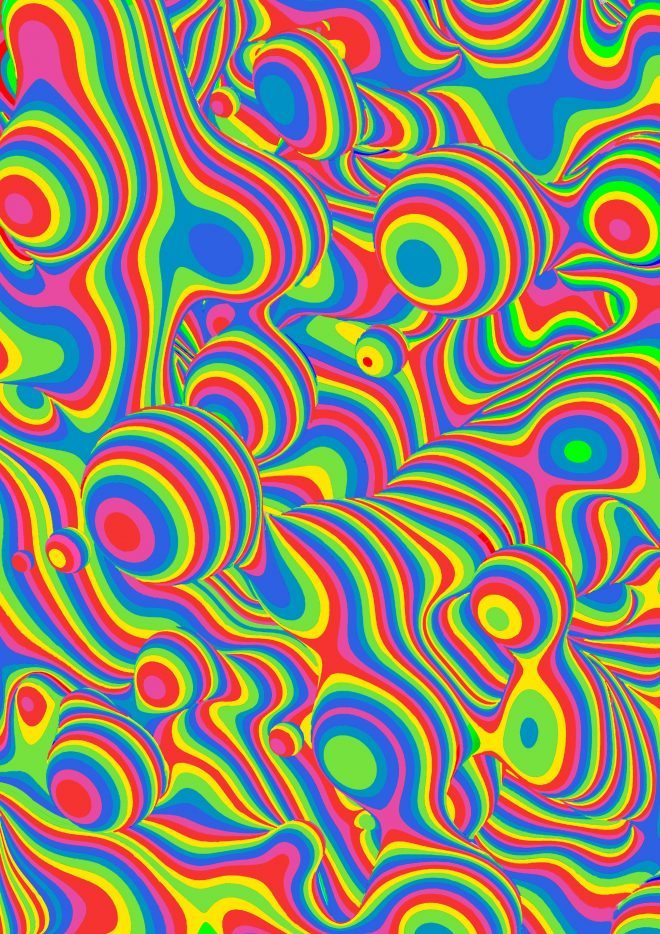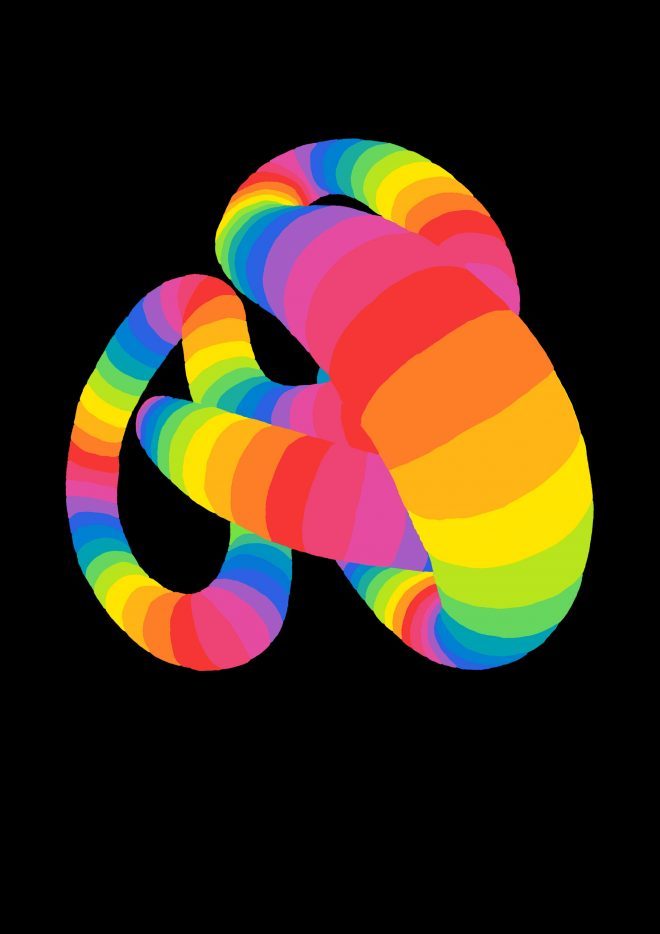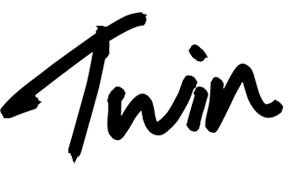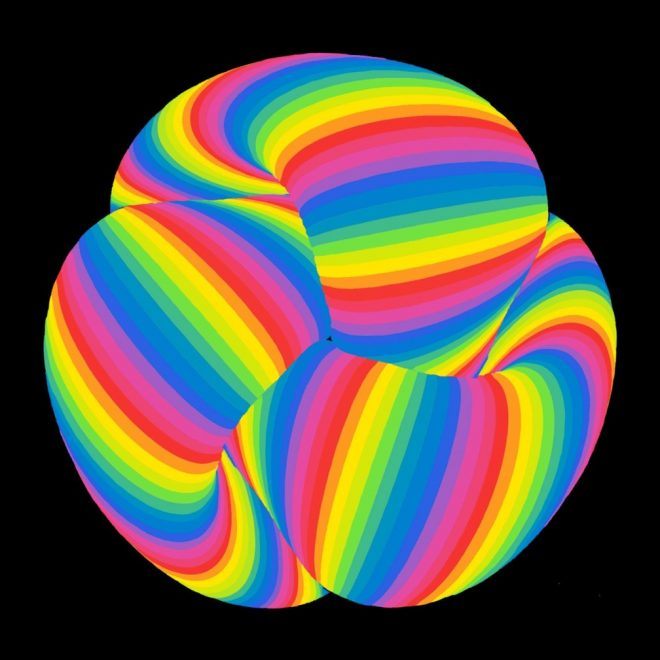From the 18th January until the 25th February 2018, the Zabludowicz Collection will host Siobhan Coen’s Unknown Knowns, an installation featuring the voice of former US Secretary of Defense Donald Rumsfeld, alongside LED pulsating light that saturates a large print of brightly coloured pixels, creating a hallucinogenic work that is both seductive and destabilising.
Siobhan Coen focuses her work on the function of the human mind. Her research into scientific theories of consciousness and perception is brought into dialogue with social realities, and her examination of neurological, technological and political information-filtering makes her work particularly relevant. We spoke to Siobhan about Unknown Knowns, the inclusion of political figures in her work, and her artistic methods.
Can you tell us about your piece Unknown Knowns?
It’s an evidence-based fiction. I have re-edited the voice of Republican Donald Rumsfeld from his audiobooks, extracting abstract statements until they suggest a narrative. Rumsfeld emerged as an aesthetic philosopher-type character intent on changing the way we see. The audio is combined with pulses of programmed RGB lights that animate a panoramic pixelated print, creating an illusion of movement.
How has the work of artist Brion Gysin informed your practice?
I had always felt a bit short-changed by how little of the information we receive through our senses actually makes it into our consciousness. I read a study by Professor David Nutt, which found that taking hallucinogenic drugs reduced this unconscious brain filtering. Subsequently, I was drawn to Gysin’s Dreamachine – a device for inducing hallucinations from flickering light effects – as a way of accessing all that missing data, and also to explore the possible psychedelic effects of reduced information filtering in society. I have also been influenced by his cut-up technique, a method of rearranging text in order to find truth.

How does your work examine visual perception and unconscious control?
I rework the component parts of digital communication – RGB light, pixels that make up images, and the words of those with the loudest voices – to examine how their qualities rather than subject matter, might affect us beyond our conscious awareness. Questions of how human perception can be manipulated and altered are pretty timeless, and I hope my project is open enough to relate to different cultural and technological moments. In fact, I’m drawn to how these things can be cyclical. For example, Steve Jobs believed that the feeling of connectedness from taking LSD in the 1960s allowed the internet to be imagined. And the internet now seems to be producing a slightly hallucinogenic effect by reducing information filtering. There’s a looping of cause and effect.
What methods do you use to create tension between form and content?
I try to edit the voice so that it sounds believable, in order to highlight how form rather than content can determine what we perceive to be true. But also, the process of maintaining speech rhythms prevents me from imposing my thinking. I find that both the narrative and visual elements become largely dictated by the form rather than the content of the writing. Rumsfeld’s books were full of proclamations and advice, they had a quality of persuasion or seduction that suggested projection to an outer world in order to change it.

How do you put the audio and visuals together to create the final piece?
I create the audio and visual elements in parallel so that they feedback into each other. I find it a way of exploring my interests through a system of embodied cognition, rather than doing so purely intellectually.
How do you choose which political figures you want to incorporate into your work?
I first used the voice of Tony Blair from his audiobook A Journey (2011) – he just struck me as someone who had seen things that weren’t there, so he was a good figure to talk about my interests. In my research I became interested in the political rhetoric of that era, the turn of the millennium, as potentially the beginning of the post-truth phenomena that surrounds us today. Rumsfeld’s abstract language stood out as something very particular however, in the way he deployed it to defocus attention.
What do you hope viewers will take away from the installation?
I hope the piece offers a refocusing of attention, and a shifted view of material that might feel at first familiar. I think of the project as being about truths hiding in plain sight. And at the very least, visitors get to take away a printed transcript if they wish.
Zabludowicz Collection Invites: Siobhan Coen, 18 January – 25 February 2018, Zabludowicz Collection, London, www.zabludowiczcollection.com


 PREVIOUS
PREVIOUS

 Twitter
Twitter
 Tumblr
Tumblr
 YouTube
YouTube
 Facebook
Facebook
 Instagram
Instagram
